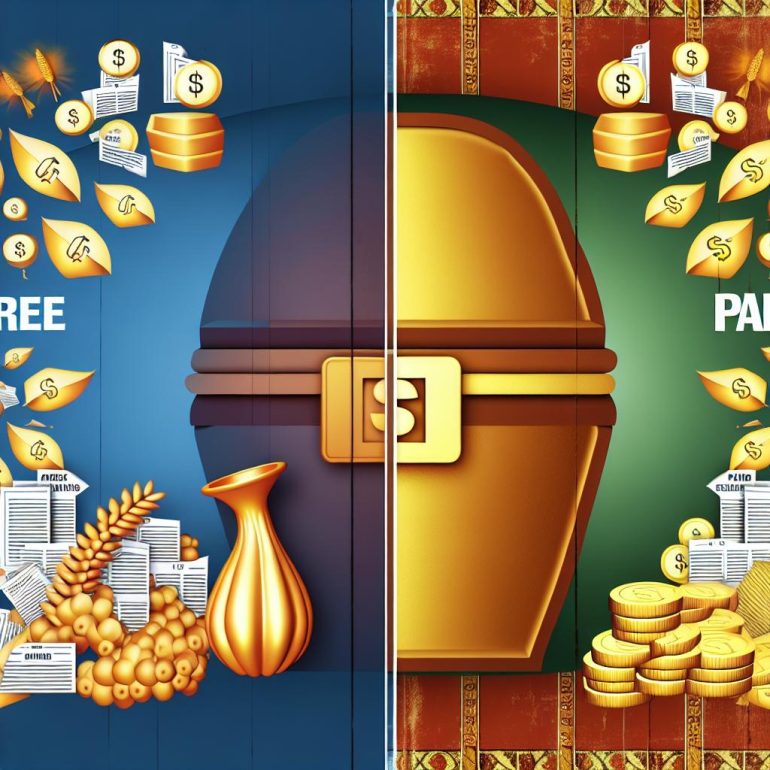Introduction
In the rapidly evolving digital landscape, ezines, or electronic magazines, have emerged as a significant medium for disseminating information, insights, and entertainment. These digital publications cater to audiences with varied interests and are distributed directly to subscribers through email, making them an accessible and convenient source of information. However, publishers often face the critical decision of whether to adopt a free or paid model for their ezine offerings. Each choice comes with its unique set of advantages and challenges, and understanding these factors is essential for making an informed decision.
Free Ezines
Advantages
One of the primary advantages of free ezines is their ability to attract a broad audience. Since there is no financial barrier for subscribers, these digital magazines can expand their reach rapidly, which often results in a swift increase in subscriber growth and content distribution. For content creators who aim to enhance their brand visibility or increase traffic to their websites, free ezines serve as a powerful marketing tool.
Moreover, free ezines can become attractive platforms for advertisers who seek to engage with a large audience. This scenario opens up opportunities for revenue generation through advertisements and sponsorships, which can help offset the costs involved in content production. As more advertisers recognize the value of reaching a wider audience, free ezines can capitalize on this trend, creating mutually beneficial partnerships.
Challenges
Despite their advantages, free ezines face significant challenges, particularly in terms of monetization. While advertising can generate some revenue, it may not always suffice to cover production costs, especially when subscriber growth plateaus or advertisers decide to cut back their expenditures. Another potential challenge is the risk of editorial independence being compromised if advertisers attempt to exert influence over the content.
Additionally, there is a perception issue associated with free content; audiences may perceive it as having lesser value compared to paid offerings. This perception can impact audience engagement levels and the credibility of the publication. Publishers need to work diligently to maintain high-quality content that engages and retains their audience, despite these challenges.
Paid Ezines
Advantages
Ezines that opt for a paid model benefit from immediate financial advantages. A subscription-based system provides a consistent income stream, allowing for better sustainability and enhancement of content quality. This revenue can be strategically reinvested into various aspects of the publication, such as hiring skilled writers, improving the overall design, or expanding distribution efforts to reach new audiences.
Subscribers to paid ezines typically demonstrate a higher level of engagement. The act of paying for content fosters a sense of value and loyalty towards the publication. This often cultivates a dedicated community of readers who are interested in gaining unique insights or accessing specialized information that might not be readily available elsewhere.
Challenges
The significant challenge faced by paid ezines is the task of acquiring and retaining subscribers. To convince individuals to pay for content, publishers must ensure a high level of quality, offer unique value propositions, or focus on niche interests that are not adequately covered by other publications. This necessitates ongoing innovation and effective engagement strategies to keep readers subscribed.
Another challenge is that the potential subscriber base for paid ezines is inherently smaller compared to free ones. This limitation in reach could pose difficulties in attracting advertisers if part of the revenue model relies on advertising income. Publishers need to strategize effectively to maximize return on investment under such constraints.
Conclusion
Both free and paid ezines present distinct sets of benefits and drawbacks. Publishers need to carefully weigh their options in light of their objectives, the nature of their content, and their target audience. Free ezines excel in terms of reach and accessibility, providing an opportunity to build a broad readership base. However, the challenge of monetization and maintaining perceived value remains. On the other hand, paid ezines offer the advantage of a steady revenue stream and an engaged subscriber base, although they come with the challenge of building and maintaining a paying audience.
Ultimately, the decision on whether to pursue a free or paid model should align with the publisher’s strategic goals and market positioning. A thorough understanding of the intricacies involved in each approach will enable publishers to make informed decisions, ensuring the sustainability and success of their ezines in the competitive digital landscape.

